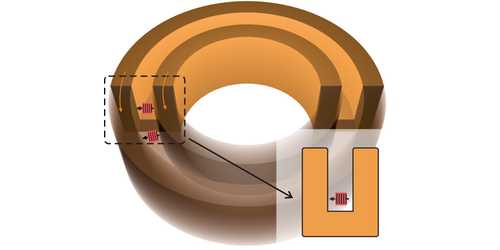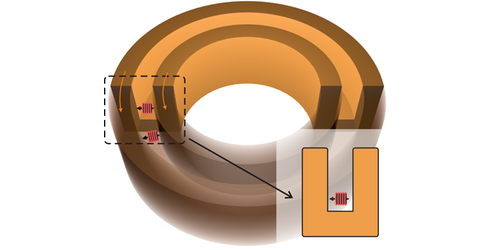One-Way Transfer of Magnetic Fields
Jordi Prat-Camps creates magnetic metamaterials—structures that manipulate magnetic fields in unconventional ways. Over the last few years, the physicist, who is at the University of Sussex in the UK, and his colleagues have constructed a cloak that makes objects invisible to magnetic fields and a “wormhole” that directs a magnetic field between two points in space along an invisible tunnel, as well as other things. Their latest material—which acts as a magnetic diode—enables unidirectional transfer of a magnetic field between two objects. Prat-Camps says that such a device could increase the efficiency of magnetic-based wireless power-transfer systems.
An electric current flowing through a coil of copper wire induces a magnetic field in the coil. This magnetic field can then transfer to a nearby magnetic object, such as a second coil of wire. The laws of electromagnetism, and experimental demonstrations to date, predict that this transfer is symmetric, meaning that magnetic fields move both from coil A to coil B and from coil B to coil A. Prat-Camps and his colleagues wondered if they could break this so-called magnetic reciprocity and make the magnetic-field transfer one way. The answer, they found, is yes, if both coils are placed in between the two walls of a hollow, rotating, conducting cylinder, where the walls have a U-shaped cross section.
In calculations and a proof-of-principle demonstration, Prat-Camps and colleagues showed that when the cylinder rotates at a constant velocity, a magnetic field from coil A can transfer to coil B, for example, but not the other way around. This nonreciprocity holds as long as the cylinder keeps spinning. Prat-Camps says that their current device is bulky and impractical for everyday use, but the team is exploring other device designs.
This research is published in Physical Review Letters.
–Katherine Wright
Katherine Wright is a Senior Editor of Physics.





